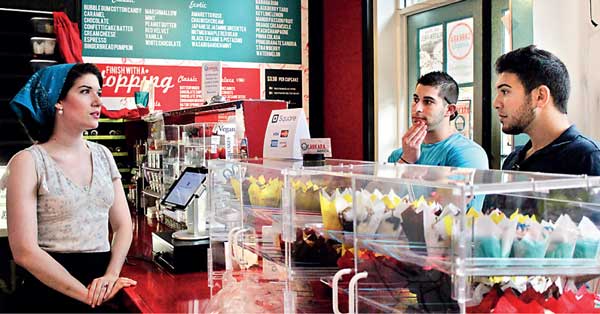Reply To:
Name - Reply Comment
Last Updated : 2024-04-25 04:27:00
 As you begin the process of changing your business focus from products to customers and prepare to undertake building the organisational structure to support that change in focus, your measures of performance need to change as well. For two weeks, we will review the business metrics and analytics that support your organisation’s transformation to customer relationship management (CRM).
As you begin the process of changing your business focus from products to customers and prepare to undertake building the organisational structure to support that change in focus, your measures of performance need to change as well. For two weeks, we will review the business metrics and analytics that support your organisation’s transformation to customer relationship management (CRM).
Understanding customers and developing customer intelligence will obviously drive many of your initial CRM initiatives. New business metrics and supporting analyses are also required in order to continually monitor the customer dimension of your business.

Transforming business metrics
Traditionally, organisations have developed the metrics necessary to support a particular business focus or measure performance of a specific division. Therefore, it is not surprising that most organisations find that different parts of the organisation are focused on very different metrics.
Most organisations today have business performance measures related to these three Ps —product, place and programme performance. Let us review these three in little detail.
Product performance metrics
Measuring product success is an important part of successfully managing products. There are three kinds of metrics that need to be tracked by the product management:
(1) Overall success metrics tied to the profit equation of the company
(2) Scientific measures of whether product initiatives are successful
(3) Diagnostic metrics to better understand ‘why’
Overall success metrics
What is your product’s purpose? How is it achieving that purpose? How does product success yield company benefit? What numbers need to change to earn more revenue?
Write down the profit equation for the company and continue to translate variables into metrics that are a function of the product. Start simple (Profit = revenue - cost) and get more complex.
Use these metrics to drive strategy decisions and help focus on those areas of the product that are highest leverage. For example, if the Southern Province sales drop-off rate is only 10 percent, then the potential impact of improving it is quite limited. However, if your cost to serve is 1.5 times revenue and increases linearly with volume, then you need to focus on cost reduction measures. This sounds obvious but is overlooked all the time. Concentrating on overall success measures are helpful for directional purposes but are too often used when they shouldn’t be, which is to determine the success or failure of specific product initiatives. That’s where more scientific measures are needed.
Scientific measures of whether product initiatives are successful
To determine whether a particular initiative (all the way down to a bug fix or enhancement) was successful, you must apply a scientific approach. That means measuring the difference in observed metrics from what those metrics would have been had the initiative never been taken off. This is trickier. Many highly successful products were rolled back, disastrous products pushed forward, etc., all because of improper analysis. Here, there are a number of mistakes to avoid:
Misreporting: Often new features require new statistics to be captured or reports to be generated. It’s amazing how serious a reporting bug can be.
Cannibalization:You drive one measure but at the expense of another that you are not measuring.
Confounding factors: The metric goes up or down but is influenced by something other than your product enhancement.
Dependencies: The metric improves but only through interaction with another ‘environmental’ variable. Now the significance of the other variable changing is much higher than it would have been.
Diagnostic metrics to better understand ‘why’
Unless this is your last enhancement to your product, you should work hard to understand how people use it now that the enhancement is in place. Use your product innovation not just to move the overall success metrics forward but to advance your understanding of how you will move them even farther forward in the future.
For example, if you add a new tab to a website and you have a good adoption rate for your new module, you need to also understand where they are clicking from. How are your users discovering it? Does that vary by user segment? This will help to understand the answers to questions you are sure to ask in the future, such as, “What else should I have my users discover from these launching pads?” and “what’s a more compelling offering for this group of users?”
Product managers often overlook this class of metrics. The whole point is to learn as you go, then reinvest this information to make better product decisions down the road. If all you know is whether your investment was successful, but you don’t know why, then you won’t know what your next investment should be and eventually your luck will run out.
Place performance metrics
The fundamental measurement of sales opportunity for any particular retail store is based on traffic metrics. Traffic is simply defined as the number of shoppers that enter the store and advances in video analytics have made traffic counting more precise than ever before. In fact, with today’s enabling technology, video analytics can even provide aggregate data as to age and gender. But, traffic counting, alone, is usually not good enough to stand on its own.
Conversion is a metric that measures what percentage of the traffic actually engages in a transaction and is a function of the number of transactions divided by store traffic. Conversion gets retail leaders closer to a valuable actionable metric, but again, as a standalone measure, it’s not good enough.
Average transaction value, or ATV, goes a bit further and represents the average sales value of each transaction – so retailers on a basic level should understand the traffic, conversion and ATV of every store.
There is another metric known as shopper yield. It is determined by multiplying conversion with ATV. Shopper yield helps retail leaders ask better questions. With better questions come better answers, and, in turn, better strategies for improvement. Retailers understand their markets and realize that various markets will demonstrate different shopping behaviours. Arming business leaders with the data that helps stores drive their individual performance will ultimately move the total company performance.
Let’s refer to three stores that fall under one area manager’s responsibility:
Store 1 – conversion 16.6 percent and ATV Rs.10,700
Store 2 – conversion 13.2 percent and ATV Rs.12,610
Store 3 – conversion 11.7 percent and ATV Rs.13.130
Which is the better performing store? Store 1 leads the way in conversion at 16.6 percent, so most business leaders (in this case an area manager) might challenge stores 2 and 3 to improve performance.
However, when looking at the shopper yield below, we find a different outcome. The shopper yields are Rs.14,780, Rs.16,650 and Rs.15,360, respectively for stores 1, 2 and 3.
The province’s performance narrative begins to expand now. Store 2, on the basis of a solid conversion and ATV, has a sales yield of US $ 16,650, highest in the province. With additional data better defining the picture, the area managers have a more accurate idea of performance and that will lead to a more accurate diagnosis of root opportunities
for improvement.
Action plan: The area manager in this case should advise Store 1 to improve its shopper yield by giving the store a goal to attain each week, keeping a tab on it and also advise them to share best practices of Store 2. Store 3 should focus on driving conversion. Specifically, it should ensure staffing is aligned to meet traffic demand. Secondarily, the store should identify the ‘magic hours’ of success and of opportunity. Reviewing the customer-to-staff ratio will be helpful in identifying specific opportunities. Of course, Store 2 needs to be complemented
and rewarded.
(Lionel Wijesiri, a corporate director with over 25 years’ senior managerial experience, can be contacted at lionwije@live.com)

Add comment
Comments will be edited (grammar, spelling and slang) and authorized at the discretion of Daily Mirror online. The website also has the right not to publish selected comments.
Reply To:
Name - Reply Comment
US authorities are currently reviewing the manifest of every cargo aboard MV
On March 26, a couple arriving from Thailand was arrested with 88 live animal
According to villagers from Naula-Moragolla out of 105 families 80 can afford
Is the situation in Sri Lanka so grim that locals harbour hope that they coul